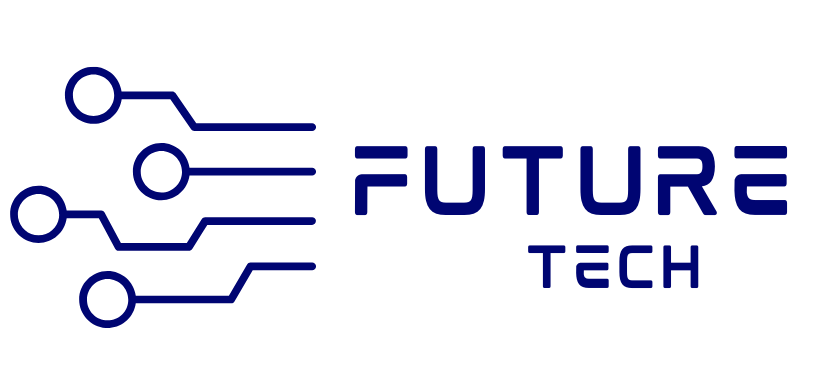Over the last several years, cloud computing has emerged as a key contribution to the advancement of technology. It entails the transmission of computer resources, including servers, storage, applications, and services, via the use of the national and international internet. The storage, processing, and management of data has been completely transformed by cloud computing, which has become an indispensable tool for enterprises of all kinds. Cloud computing has also altered both people and organizations. The purpose of this article is to offer a complete assessment of cloud computing, including subject matter such as its history, advantages, obstacles, and potential for the future.
History of Cloud Computing:
This concept may be traced back to the 1960s, when utility computing was first being developed. In the 1970s, the idea of decentralizing computer resources on a massive scale was put up for consideration. The concept of virtualization was first introduced in the 1990s. Early in the twenty-first century and again in 2006, the phrase “cloud computing” was first used. In the beginning of the contemporary age of cloud computing, Amazon Web Services introduced its cloud-based platform, which marked the commencement of the technology.

Benefits of Cloud Computing:
- By doing so, firms are able to avoid the significant capital expenditures, which results in cost savings. in connection with the acquisition and upkeep of hardware and software that is located on the premises. Instead, users have the option of being charged on a pay-per-use basis for the computer resources that they need. This has the potential to result in considerable cost reductions.
- Through scalability, companies are able to simply and rapidly adjust the amount of computer resources they have available to them in response to fluctuating demand. The flexibility that this affords might be particularly advantageous for companies that are subject to fluctuations in demand that are either seasonal or unforeseen.
- Accessibility involves providing users with the ability to access their data and apps from any location and at any time, provided that they have a connection to the internet. This accessibility may be advantageous for individuals who operate from a distant location, personnel who are mobile, and firms that have various sites.
- Data security: providers often provide powerful security features, such as encryption, firewalls, and intrusion detection, which may give higher data protection than on-premise systems. These safeguards can be found in most cloud-based services.
Challenges of Cloud Computing:
- Information Security and Privacy: Because it compels enterprises to entrust their data to a third-party provider, it might give rise to issues over the privacy and security of the data. In addition, the use of cloud computing may give rise to legal and regulatory concerns about the security of data and the privacy of individuals.
- Relies on internet access, which may be an issue for organizations located in regions with inadequate or unstable internet infrastructure. Dependence on the Internet: Is dependent on internet connectivity. Furthermore, downtime or outages may have an effect on the operations of a firm as well as its production.
- Moving data and apps to the cloud may be a difficult and time-consuming operation, which can lead to a situation known as vendor lock-in. Consequently, this might make it difficult for enterprises to transfer providers, which can result in vendor lock-in and restrict their capacity to take advantage of new technologies or cost reductions.
Future of Cloud Computing:
Additionally, it is anticipated that cloud computing will continue to develop and grow in the years to come. There are a number of important themes that are influencing the future of cloud computing, including the following:
- The term “edge computing” refers to the practice of processing data farther away from its origin, as opposed to sending it to a server that is located in a central location. This may enhance the speed at which data is processed and minimize latency, making it perfect for applications such as artificial intelligence and the internet of things.
- Cloud computing that combines public and private cloud solutions is referred to as hybrid cloud computing. This kind of cloud computing enables businesses to reap the advantages of both types of cloud computing. Because of this, there is the potential for more flexibility and control over the data and applications.
- The term “multi-cloud” refers to the practice of using many cloud providers for various applications or services, as opposed to depending on a single cloud provider. Redundancy, resilience, and cost savings are all potential benefits that might result from this.
The development of new technologies, such as edge computing, hybrid cloud, and multi-cloud, which have the potential to give even more control, flexibility, and efficiency than previously possible. It is essential to handle the problems and dangers connected with cloud computing, such as matters of data privacy and security, in order to guarantee that companies are able to fully exploit the advantages of this powerful technology. This is because cloud computing is becoming more popular among enterprises.
The capacity of cloud computing to facilitate distant work and collaboration is one of the most significant benefits of this technology. The COVID-19 epidemic has led to an increase in the number of people working remotely, making cloud computing an even more important tool for enterprises to use in order to keep their productivity and communication levels high. Tools that are hosted on the cloud, such as video conferencing, project management, and file sharing, have made it possible for workers to collaborate in a seamless manner from multiple places. This has enabled companies to continue operating even in the face of these hard times.
One other significant development in cloud computing is the growth of serverless computing, which refers to the practice of using the infrastructure of cloud providers in order to execute code without the need of requiring servers or virtual machines. Because of this, development may be simplified, and expenses can be reduced, since corporations will only pay for the computer resources that they really utilize. Additionally, serverless computing has the potential to enhance scalability, since the cloud provider is able to autonomously distribute resources in accordance with the demand.

The more broad use of cloud computing is a growing trend. It is very necessary for companies to take into consideration the possible dangers and difficulties that are related with it. The fact that enterprises must entrust their data to third-party suppliers continues to be a key source of anxiety over data privacy and security. When selecting a supplier, it is essential to choose one that has a solid reputation and in place robust security measures. Ensure that the data is encrypted and that frequent backups are executed. In addition, companies should have a strategy in place to deal with any possible downtime or availability issues that may arise. If it wants to reduce the effect on operations as much as possible, it need to think about putting backup systems or redundancies in place.
conclusion
It has completely altered the method in which organizations keep their items. It has evolved into a technology that is indispensable for companies of all sizes, since it processes and manages data. As a result of its advantages, which include significant cost reductions, scalability, and accessibility, it has become a popular option among enterprises. with the goal of increasing both production and efficiency. However, it also presents obstacles and hazards, such as concerns around the privacy and security of data. It is necessary to solve these issues in order to guarantee that organizations will be able to fully reap the advantages of this sophisticated technology. Although it is still developing. For the purpose of mitigating possible risks and obstacles, it is essential for organizations to maintain a level of awareness about the most recent trends and developments, as well as to implement best practices.
